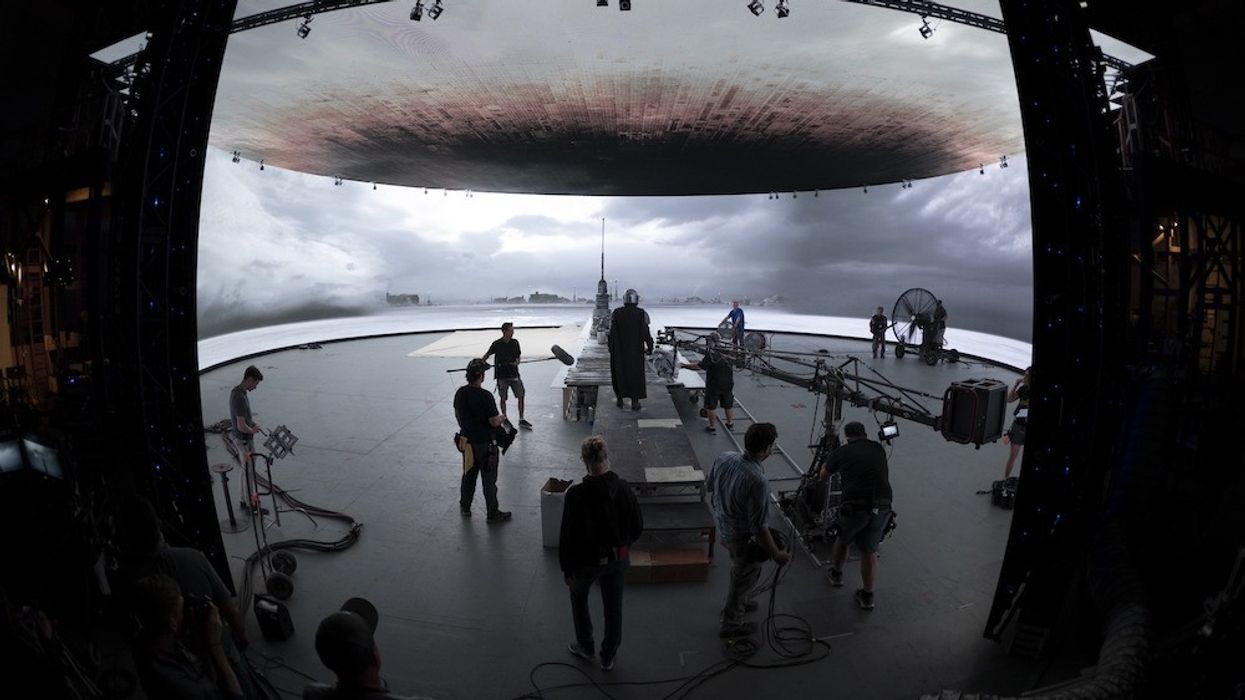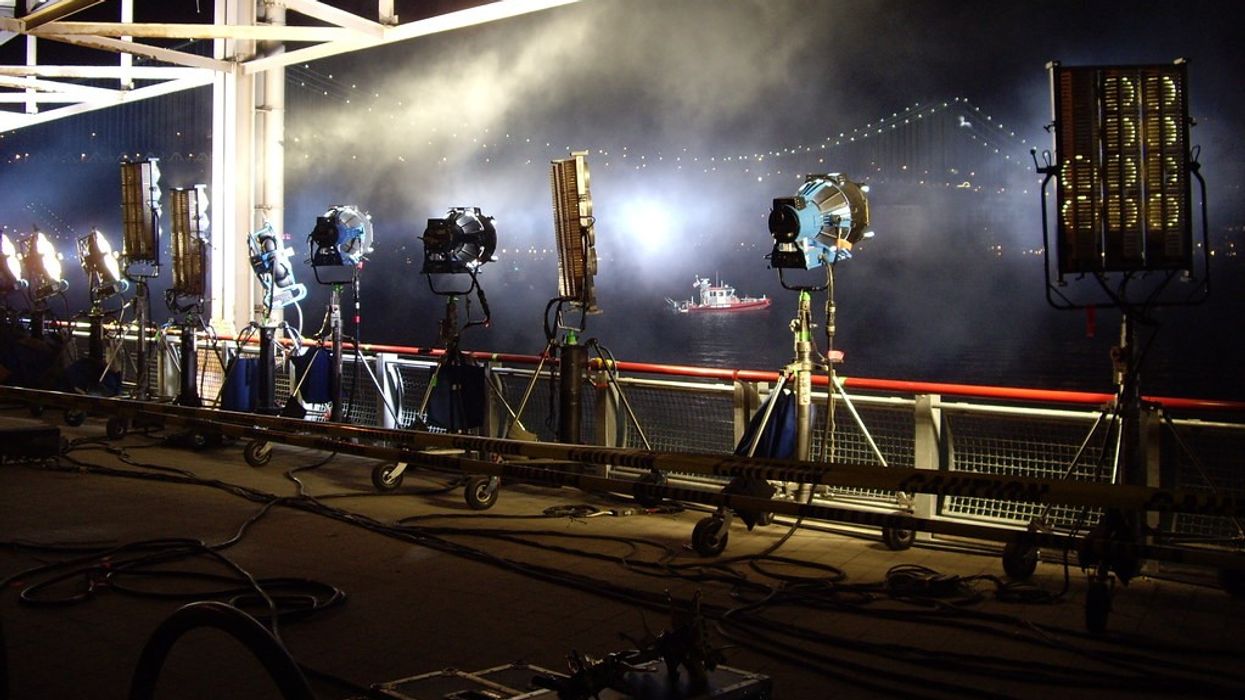How Tech Used for 'The Mandalorian' and 'Lion King' Are Changing Hollywood
Hollywood is looking for any kind of tech to start shooting ASAP, but maybe it has already been invented.

The global pandemic of COVID-19 has halted Hollywood production. There have been lots of people wanting to reopen the world, but no one knows how to start movies and TV safely.
Many people agree that the best-case scenario involves a small crew you can test daily.
But how can you get a small crew and still make things look real?
It turns out the answer may have already been developed by Disney in shows like The Mandalorian and movies like The Lion King (remake).
Let’s dig a bit deeper.
How tech used for The Mandalorian and Lion King is Changing Hollywood
VFX supervisor Rob Legato (The Lion King, The Jungle Book) is not having as much trouble working at home and making movies as he thought. He told Indiewire, “As much as it’s great to be in the same room with people, sometimes you don’t need to be,” he added. “I have a setup in my basement similar to The Lion King with a dolly, hand-held camera, pan, and tilt wheels and using the Unreal game engine with an operator on Google Meet.”
It turns out that it might be all you need with modern technology.
Legato is currently working with an unnamed director on a huge pitch involving a ton of visuals. In order to meet the goals he set for himself prior to the pandemic, he has found a way to continue to work from home.
Legato operates the camera, filming a car chase with characters he animated on a virtual location. “It’s going to be based on real locations, and it’s going to look photoreal, and some bits and pieces, as you construct the sequence, will have a video wall setup,” he said. “And one of the reasons we’re doing it with Unreal is, a bit like The Mandalorian, where, as we’re designing and creating the sequences, there’s an eye toward reproducing some of it on the video wall for close-ups of cars and sets that don’t have to be built or finished.”
So, is this where Hollywood is going?
StageCraft
We’ve covered this topic in other NFS articles, so I'll keep it brief. StageCraft is an artificial landscape using the popular game engine Unreal Engine by Epic Games to support the backdrops in creating a reality with practical effects.
That means actors won’t’ t have to venture out into the real world and risk exposure, and this eliminates the need for costly, and time-consuming location shoots entirely.
“It’s going to be the wave of the future, no question about it,” Legato said. “And people are really interested in it now [during the lockdown]. It’s hastening acceptance because of the ability to do it and be socially distant still.”
He elaborated, “You don’t need to hop from exotic location to exotic location for a day or two of work. You can plan out your sequence where you don’t have to do that. You can take advantage of the digital backlot, and you can basically replicate what you can get on location. It doesn’t take long to master it if you understand how it works, how to control it, what every set up is, how to light it, and how to color correct it.”
Rob Bredow, executive creative director and head of ILM, said to Indiewire, “There is a global shortage of shooting stages, and that’s not likely to change in the near term. StageCraft allows productions to significantly reduce the number of stages needed concurrently, given the flexible nature of the LED volume. The technology has come at just the right time to help the industry continue to produce quality content despite the challenges we all face.”
That seems ideal in these trying times.
And the tech is getting better...
As things move toward more place adopting Unreal Engine, its maker, Epic Games, wants to make sure the tech keeps getting better. In an unprecedented move, some of the virtual production processes on The Mandalorian are available for free for customers in the Unreal Engine 4.25 release.
That allows them to learn in real-time how other people use the engine and allows them more time to perfect new editions.
“The emergence of LED walls as part of the virtual production arsenal enables more real-time interactivity and collaboration across teams on a show — it establishes a creative sandbox where every department can participate in real-time, rather than the traditional linear decision-making process,” Miles Perkins, head of business development at Epic, told Indiewire.
It’s not just Disney
Disney is not the only place using this technology. Jonah Nolan, the creator of Westworld, saw StageCraft being used and got ideas for his own show. “We were able to revisit what we had tried to build for the first season [with production designer Howard Cummings and VFX supervisor Jay Worth], dust it all off, and finally make it work…to be able to move the cameras and really pump light into it.”
As more and more places adopt these techniques, virtual production will also crucially help fill the gap for scaling back the size and scope of VFX-intensive franchise and tent pole movies at every studio.
Plus, any TV show that can afford the tech right now.
We focused on StageCraft and Disney, but everyone is in on the party.
WETA is working on movies like The Batman and Suicide Squad 2 for Warner Brothers, and they are trying to utilize virtual production, too.
“This was starting to happen pre-COVID, and the current situation just adds another dimension to that conversation,” Weta’s executive producer David Conley told Indiewire. “While ramping production back up is obviously where the focus is right now, we are in the middle of an era of unprecedented growth in content production, and virtual production can be a great asset. The more we can augment the onset environment to include proxy elements or even final shot elements, the more we can de-risk the creative process upfront and deliver the closest possible version of what the director envisions. This has the potential to enhance the story and reduce cost.”
Where this leaves us...
Traditional film and television creation are going to change when this is all done. Until there is a vaccine, people everywhere are going to want a crew that does not have to risk their lives, and they don’t’ t want to pay the insane amounts of money it could take to quarantine the hundreds of people it takes to make entertainment.
New and exciting techniques must be used to keep costs low, and innovation will be highly valued.
While rich and expensive projects might be able to afford these new cutting edge things, there's still a big gap for smaller TV shows and indie productions. We’re not sure how those can come back.
It could be until late 2021 until normal shooting can happen.
Where do you think Hollywood is going?
Is virtual production the answer?
Let us know in the comments.
Up Next: Meet Miquela, the Fully CGI Actress That CAA Just Signed
Ladies and gentlemen welcome to the future. CAA has signed Lil Miquela, a 19-year-old Brazilian-American model, musical artist, and influencer with over a million Instagram followers. Oh, and she's completely computer-generated.
Read more.
















